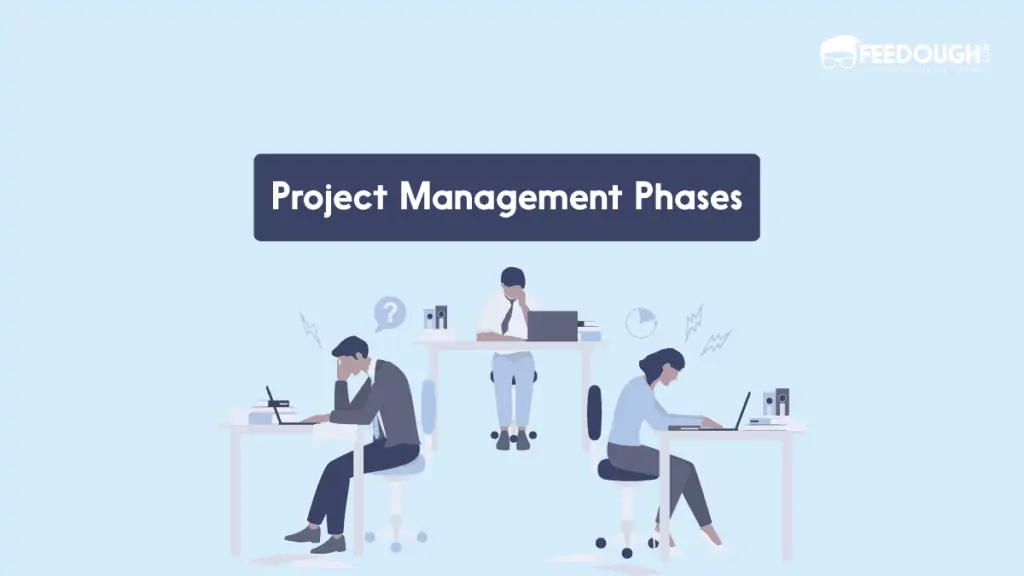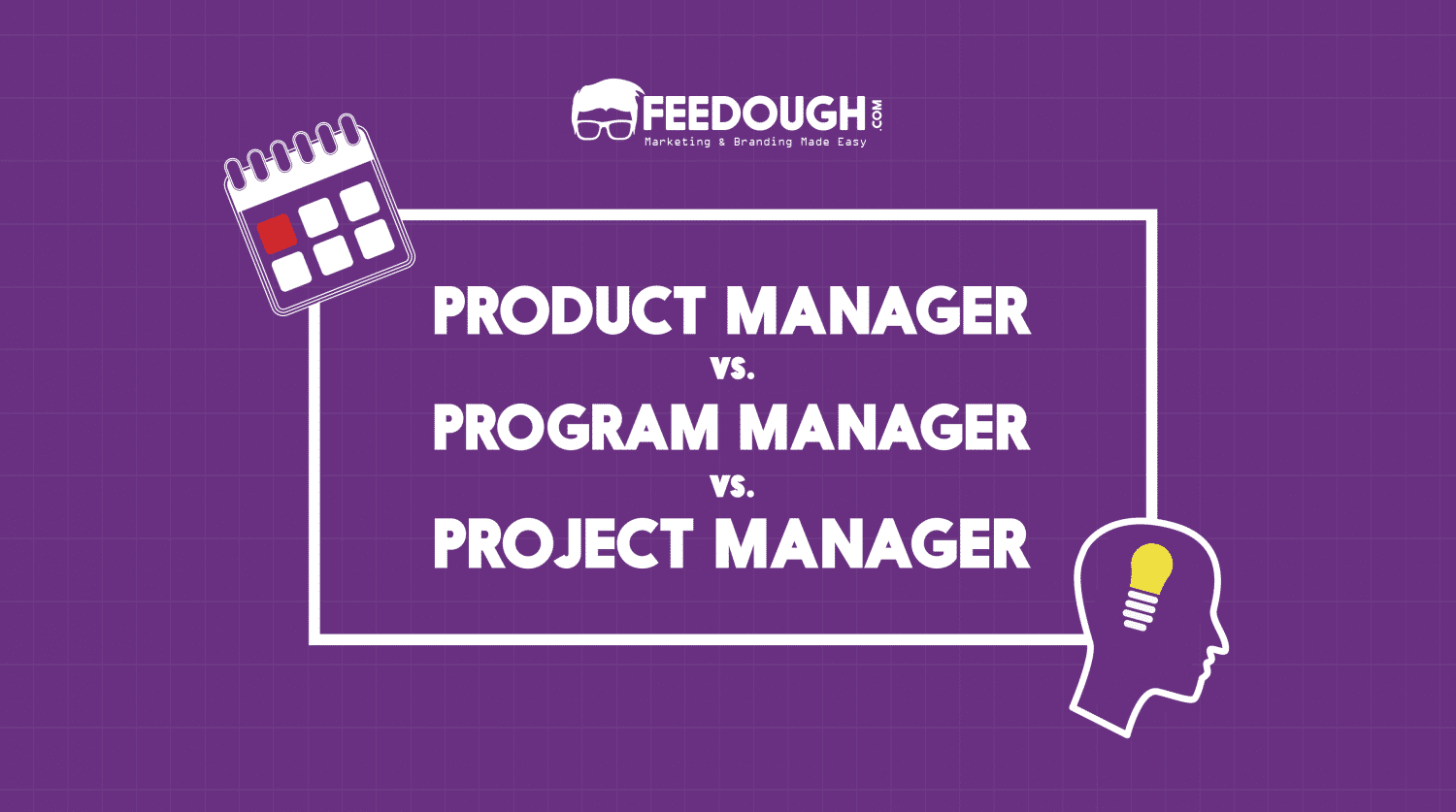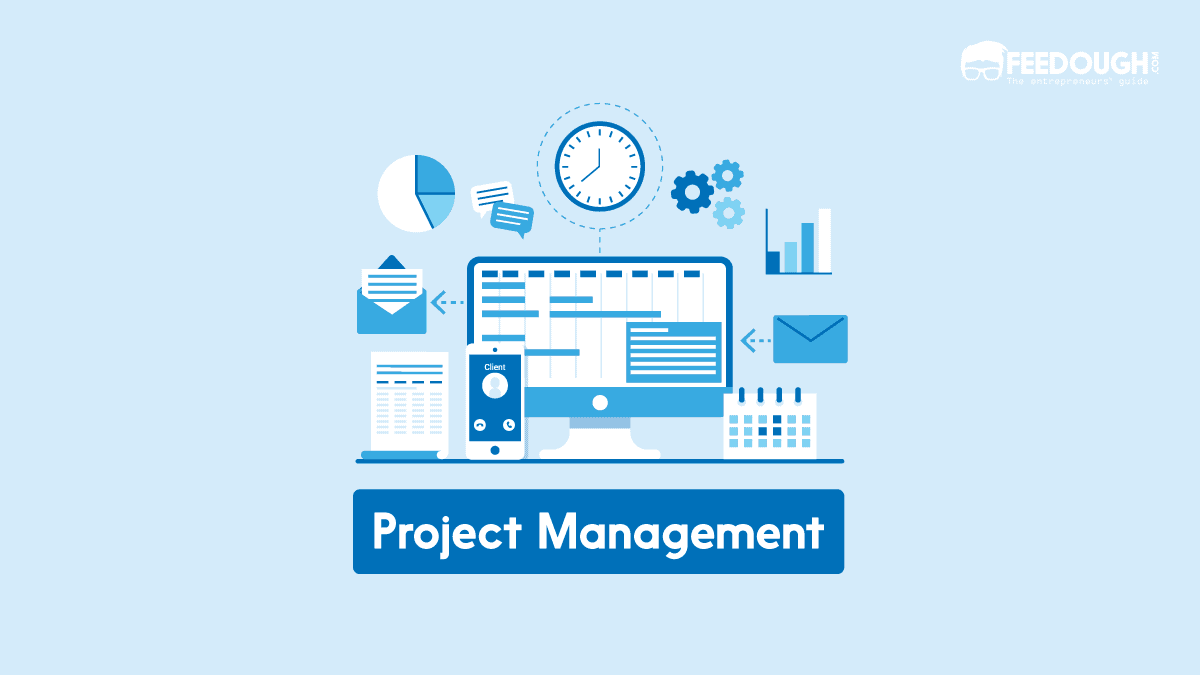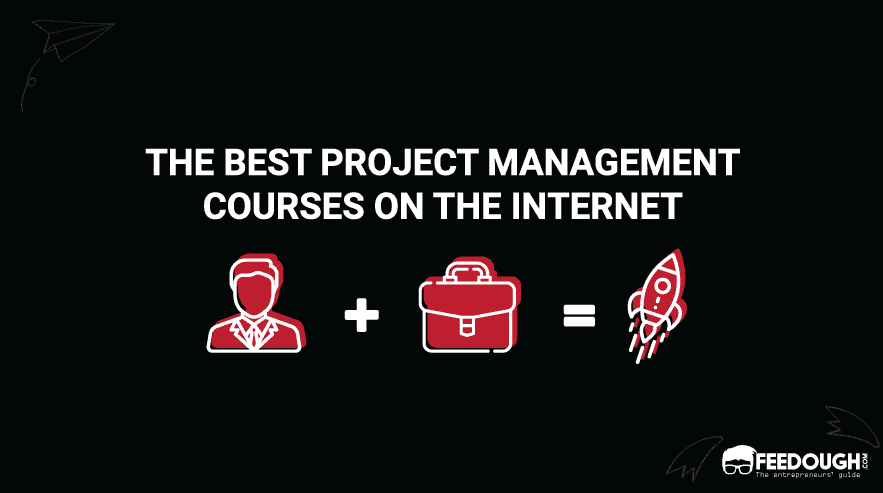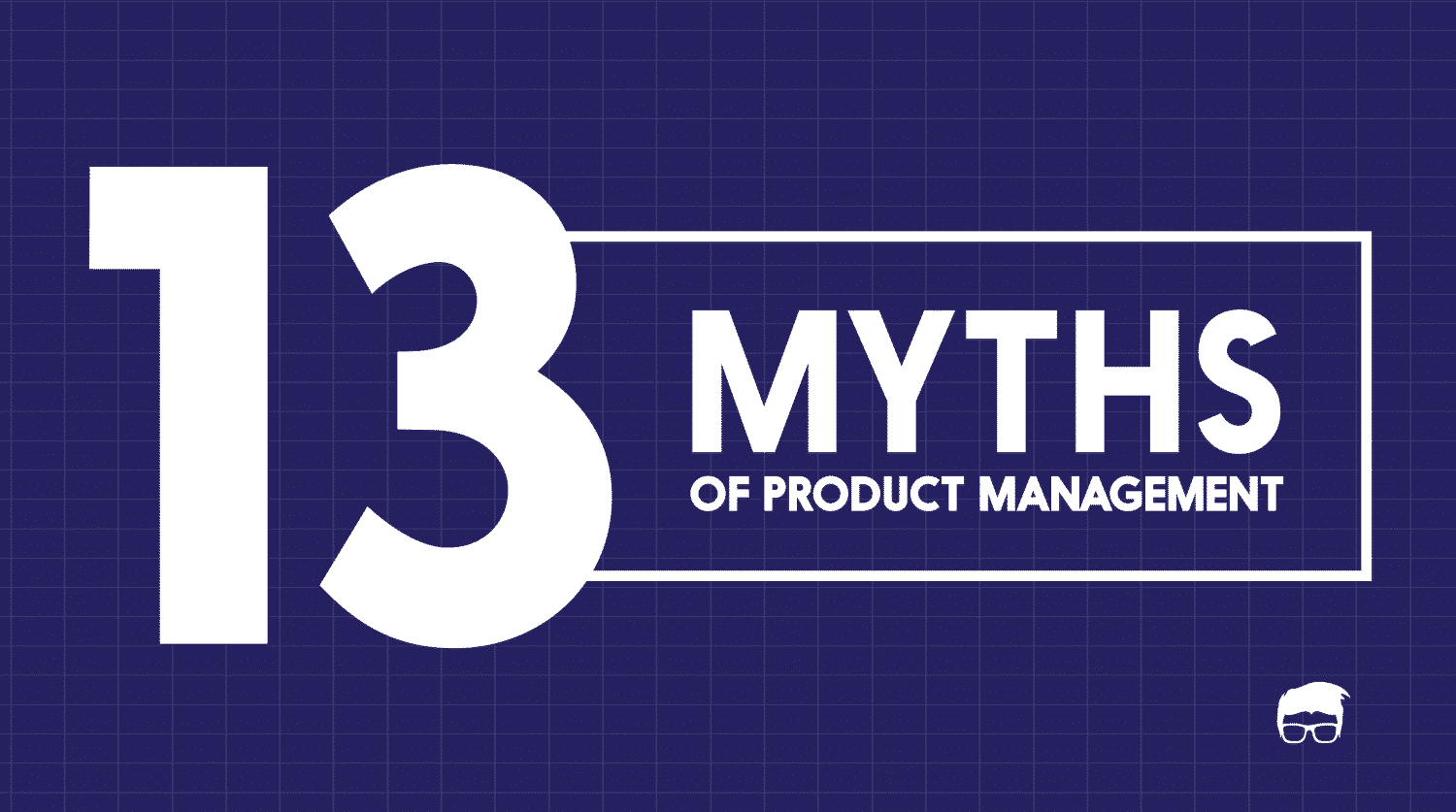Projects are complex and require various people, departments, and sometimes even organisations to work together. It is common for them to become disorganised and fail. Therefore, managing them is difficult.
To ease the process, the whole project management cycle is divided into five stages or phases. While the particulars of a project’s management vary with industry, team, project type, etc., these five phases of project management are almost consistent.
So, let us introduce you to the phases of project management.
Initiation
The initiation phase is where a project gets started. It involves defining the need of the project, making sure it’s feasible, and getting approval for its official beginning.
This phase starts with an organisation’s senior-level employee preparing a business case. They define the need, scope, nature, objectives, and stakeholders of the project they want to be executed. Then, they conduct feasibility tests to ensure that it is possible and profitable.
If the feasibility tests are successful, a rough budget is prepared, and the business case is presented to the senior managers for approval.
These senior managers are typically the stakeholders and sponsors of the project. They conduct due diligence, deliberate over the business case, and approve it.
This is when a project officially begins. A project charter or project initiation document (PID) is prepared. An evolved version of the business case, the project charter or PID outlines the project’s need, purpose, objectives, stakeholders, and constraints. Usually, a rough budget is also included in the document.
However, most of the process isn’t clear up till now. For instance, if a mobile phone company decides to launch a new feature, say a higher-resolution camera. In the initiation phase, the only thing we know is that their customers will appreciate a better camera, so the company will work on it. The ‘when’, ‘how’, and ‘who’ aren’t clear.
Now, the senior managers assign a project manager, who takes it from here. The latter refers to the project charter or PID, gets complete details of the project and stakeholders’ expectations, and begins working.
Planning
Since projects are usually complex and involve several factors, they need to be planned. Effective planning eases execution, and that’s why this phase takes around half of the project duration. Also, it is entirely handled by the project manager.
They discuss with the stakeholders to create an integrated project plan to achieve project goals within the constraints of scope, time, and budget while adhering to quality.
To begin with, they finalise the principles, procedures, and methodologies to be followed during the project’s course. Then, they identify the exact deliverables and set suitable metrics (the KPIs) to assess them. Now, the project managers define the work that needs to be done to achieve the deliverables in time and within a budget constraint. They also decide where, when, and how to procure the necessary resources.
Now comes the most important part of project planning: team building. A project is a temporary venture that demands the coordination of various departments and even contract workers. So, a whole new team is built that works outside of their regular individual jobs.
For instance, in our previous example where the mobile phone company decided to launch a better camera, tech people have to coordinate with finance, marketing, business development, and product development teams. The company further needs to collaborate with third-party vendors, advertising agencies, and several independent contractors. So, all the people actively involved in the project form a team that the project manager heads.
Furthermore, the following must be ready by the end of the planning phase.
- Scope statement: It defines the scope of the project in detail. The scope statement outlines the project’s needs, objectives, benefits, deliverables, and milestones for future reference. It can be changed during the project course but only after the approval of the project manager.
- SMART AND CLEAR Goals: One must set and measure the right goals to stay on the right track. So, projects require SMART and CLEAR goal setting.
- SMART goal-setting is a more traditional approach. It ensures that everyone understands the goals and that they are attainable and measurable. SMART stands for:
- Specific: Answers the questions of who, what, why, where, when, and which
- Measurable: Can be tracked with metrics
- Attainable: Can be achieved
- Realistic: Makes sense
- Timely: Can be achieved within the given time frame
- CLEAR goal-setting is fairly new and is designed to suit modern high-paced enterprises. CLEAR stands for:
- Collaborative: Encourages team members to work together
- Limited: Limited in scope and time to be manageable
- Emotional: Taps into the passion of the team members and encourages them to work
- Appreciable: Should be small as they are broken down from larger goals
- Refinable: Can be changed and refined as per the situation
- SMART goal-setting is a more traditional approach. It ensures that everyone understands the goals and that they are attainable and measurable. SMART stands for:
- Work Breakdown Structure (WBS): Work breakdown structure involves breaking down the whole project work into smaller sections and activities. In other words, it is a deliverable-oriented breakdown of work, wherein each key deliverable is divided into manageable sections, and thereby work done to achieve each deliverable is decided on.
- Gantt Chart: It is a bar graph-like detailed visual representation of a project’s timeline. One side of the Gantt chart represents the tasks to be done, and the other side represents the time by which they should be completed. Horizontal bars representing the duration of each task are drawn from the vertical axis.
- Communication Plan: The execution of a project requires extensive collaboration among various people and departments. For this, one needs to ensure effective communication. Since miscommunication is one of the major causes of project failure, a communication plan is fixed during the planning phase itself.
- Quality Control Plan: It is not enough for a project to be completed within the three constraints of time, budget, and scope. The deliverables have to adhere to certain quality standards to meet the desired objectives. That’s why project managers define the right metrics to be measured at each stage to assess quality.
- Risk Management Plan: When a project is being executed, certain risks crop up. While many of these cannot be foreseen, a few can be predicted, so project managers develop a risk management plan before the project execution starts to mitigate foreseen risks and manage the unforeseen ones.
- Change Management Plan: While this aspect is frequently neglected, one also needs to plan for incorporating changes. Project stakeholders often change the nature and quantity of work, leading to delay and scope creep, that is, uncontrolled growth in a project’s scope. Therefore, one must have a change management plan in place.
Execution
Now that the planning phase is over, the project team starts working on the project. They take over from the project manager who assumes the role of a supervisor and coordinator. Team members drive the project forward now.
The execution phase typically starts with a team kickoff meeting. Here, everyone is given the complete details of the project and their role in its success. The project manager assigns tasks to the team members and procures the necessary inputs like capital, agreements, and other resources. They also explain the communication and supervision mechanism to everyone, after which the team starts working on the project.
The team members finish the assigned tasks and ensure that the deliverables are handed to the right person at the right time. They try to meet targets and produce quality work; otherwise, it may reflect on their performance reports. They also attend frequent meetings organised by the project manager to track project status and ensure accountability.
Frequent status meetings, project reports, and work overload reports are generated during the execution phase to indicate whether the project will be successful or not.
One other aspect of the execution phase is related to stakeholders’ satisfaction. The project manager has to keep the stakeholders in the loop and ensure that they are satisfied. If that’s not so, the team may have to change certain project aspects following the change management plan.
Supervision
The supervision or monitoring and control phase goes hand in hand with the execution phase. However, most of the work is done by the project manager here.
Since projects are usually complex and it is difficult to ensure their effective execution, one has to monitor them and exercise controls wherever necessary. This job falls on the project managers who are already working very closely with the team.
They check on the team members, coordinate, and conduct meetings to track progress and to see that everyone is working well. They ensure productivity and make sure that no doubt and mishaps delay the project or deviate the team. They also ensure work quality by tracking metrics frequently. Furthermore, they track costs and try to finish everything within the constraint of the budget.
Risk management is another aspect of the supervision phase. Project managers are on the lookout for risk during the execution phase; they ensure that all the foreseen risks are managed as per the plan and the probability of the unforeseen ones being mitigated. They also enforce change management plans if needed.
Closure
The last phase of project management deals with the official completion of the project. Now, the team hands over the deliverables to the project manager who presents them to the stakeholders and sponsors. They also close all the project-specific deals with the contractors and ensure that all the payments are made.
Here, the team is also required to assist the project manager in accounting for used and unused resources and preparing a detailed budget. Then, the project manager analyses the deliverables and team performance to reward the right people. In many cases, small work events are also organised to thank the team for participating in the project.
An essential part of the closure phase is to finish the leftovers. For this, the team coordinates with the project manager and creates a project punch list of things that they couldn’t accomplish on time. Then, they work towards finishing it.
The last thing is to review the whole project and reflect on the successes and failures. The project team creates a detailed report of the entire project lifecycle documenting each success and failure. Then, the manager finalises, organises, and stores the report along with other project documentation and deliverables.
Go On, Tell Us What You Think!
Did we miss something? Come on! Tell us what you think of this article on phases of project management in the comments section.
A finance enthusiast, literature beau and lifelong learner. Working her way up the success ladder and her personal philosophy textbook, Kavvya believes that a good conversation is worth more than a good book. When not working, she can be found reading, writing and engaging in long walks.
